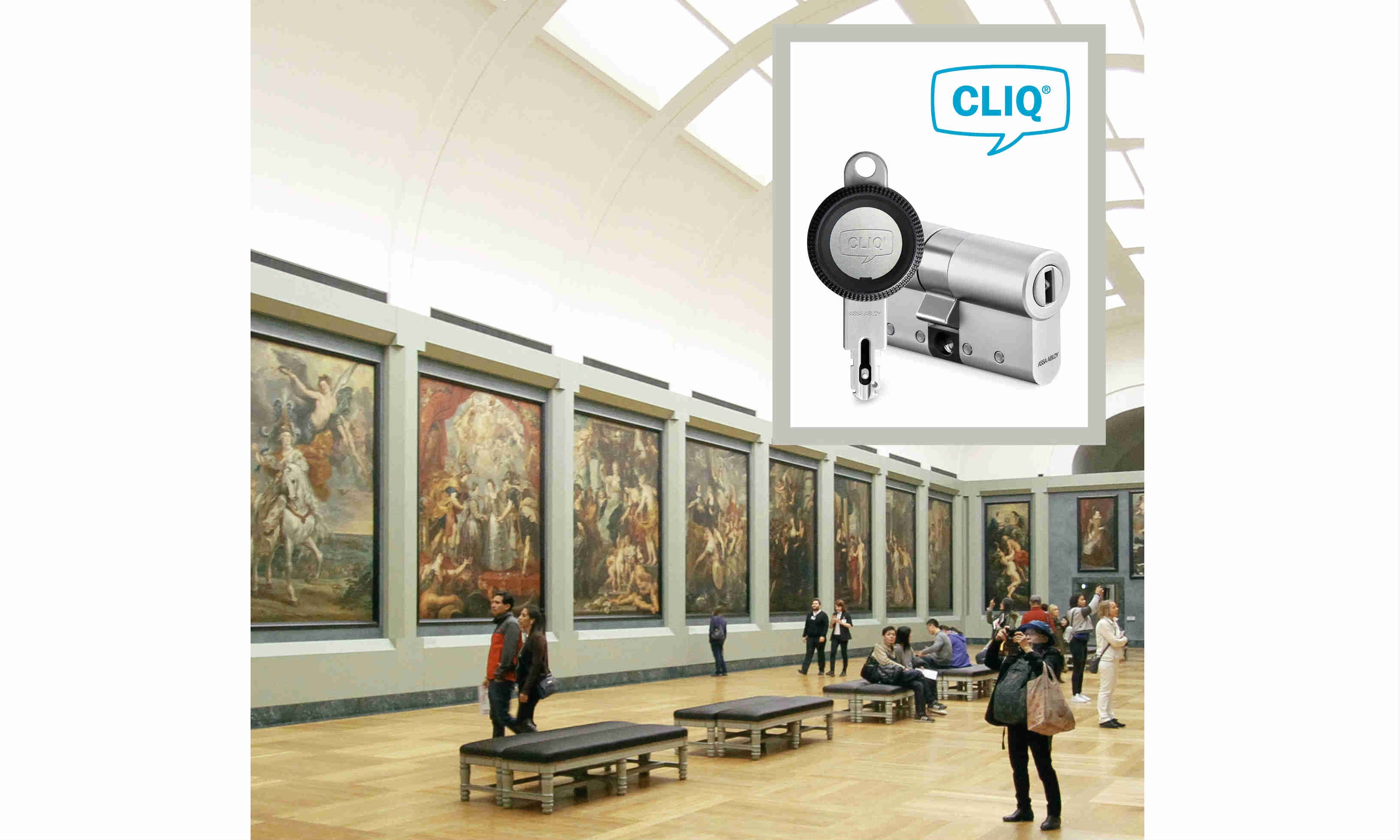When Munch’s The Scream was stolen from an Oslo museum in 1994, the thieves left a handwritten postcard. It read: “Thanks for the poor security.” As that famous heist and others show, every exhibit risks theft, damage, vandalism or terrorism — both carefully planned and opportunistic. In 2008, a gallery in Zürich lost artworks by Monet, Cézanne, Degas and van Gogh in under five minutes. According to the FBI, less than five percent of stolen masterpieces are ever recovered.
Evidence suggests most thefts occur where security systems are inadequate. Within a multi-layered system, effective access control can play a key role in ensuring the worst does not happen — whether in a heritage property with historic architecture to maintain, or in a modern building where contemporary security blends in easily.
The basic principles of access control are well established: only authorised people should have access to display or storage areas, only at times that can be defined in advance, and only within a system that can identify exactly who went where, and when.
Traditional mechanical lock-and-key systems cannot accomplish this — at least, not without a huge admin burden on security staff. But modern, electronic wireless access control has the functionality and flexibility to achieve it, if a simple checklist of 10 “musts” is covered:
- Is your system comprehensive, covering all doors and other openings, including basements, storage areas and the roof?
- Are locks certified for resistance to physical attack (e.g. anti-picking technology)?
- Can any compromised lock be re-keyed and/or replaced instantly?
- Is key tracking straightforward — so you always know who exactly has keys or access permissions, and can amend those permissions quickly?
- Are full audit trails easy to generate, detailing who has gone where, and when?
- Have you minimised the number of keys in circulation, and only issue them based on need, not convenience or seniority?
- Can you offer fine-grained levels of access to different site users as required?
- Are your physical keys protected against unauthorised copying?
- Is remote unlocking or locking of the main door enabled if there’s an emergency?
- Are locks and other devices discreet enough to maintain a property’s appearance (castle treasury, country house, historic theatre, church sacristy, and so on)?
CLIQ® has the credentials for national heritage
CLIQ® is a locking system which combines high-end mechanical and electronic protection. A range of key-operated cylinders maximise physical security. CLIQ® technology then adds an extra layer of encrypted, user-friendly electronic security on top.
Security managers at Berlin’s Deutsches Theater chose CLIQ® to protect their historic premises, an icon of 19th-century Neoclassical architecture. The theatre’s new system integrates CLIQ®’s cutting-edge microelectronics with a high-quality mechanical cylinder system. Security staff simply program each CLIQ® key with the exact access rights its user needs.
Fine-grained permission schedules, right down to the individual door, can be set for every employee and contractor. Using straightforward system software, any CLIQ® key can be scheduled to permit entry only at pre-set times — during public opening times, for example, or after hours for cleaning staff. Permission updates are communicated from system to door via CLIQ® programming keys.
Because CLIQ® locks are wireless, no major alterations were needed to existing door hardware or building aesthetics — a critical feature when refitting an historic property like the Deutsches Theater.
In Sweden, Stockholm’s Vasamuseet also upgraded an old mechanical system to CLIQ®. Staff used to carry heavy keychains with 10 or more keys. Now facility managers can amend the access rights of everyone’s single CLIQ® key at any time, even remotely.
“Previously, the biggest problem was lost keys,” says Michael Andrésen, Operations and Security Officer at the State Maritime Museums, Sweden. “Then the lock had to be replaced, which was expensive.” With CLIQ®, a lost key’s access rights are simply removed, instantly, and it no longer opens any doors. “With CLIQ®, it’s clear where our keys are.”
Making museums more cost-efficient
CLIQ® can be installed from scratch or retro-fitted to existing mechanical locks. Once CLIQ® has been installed, administrators can immediately de-authorise a lost key or change a key’s permissions, at any time and from anywhere. Only genuine CLIQ® keys with a valid software authorization will open a CLIQ® lock, eliminating any potential risks from stolen or copied keys.
Returns on security investment for museums are often measured in what doesn’t happen. CLIQ®, however, also has a positive impact on workflows, saving time and money. By eliminating the need for physical key handover, CLIQ® removes delays caused by logistical bottlenecks. When facility needs change, site users simply update their key with programming devices or via an encrypted Bluetooth connection to their CLIQ® Connect mobile phone app. It’s enough to make an art thief scream.
ASSA ABLOY sells and supports CLIQ® technology under several locking brands, including IKON, ABLOY, Mul-T-Lock, ASSA, Vachette, FAB and KESO.
To download our free white paper on museum and heritage security, visit www.assaabloy.co.uk/cliq_for_museums.



